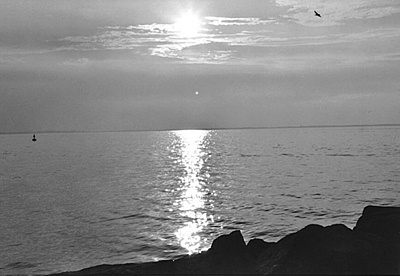All Nonfiction
- Bullying
- Books
- Academic
- Author Interviews
- Celebrity interviews
- College Articles
- College Essays
- Educator of the Year
- Heroes
- Interviews
- Memoir
- Personal Experience
- Sports
- Travel & Culture
All Opinions
- Bullying
- Current Events / Politics
- Discrimination
- Drugs / Alcohol / Smoking
- Entertainment / Celebrities
- Environment
- Love / Relationships
- Movies / Music / TV
- Pop Culture / Trends
- School / College
- Social Issues / Civics
- Spirituality / Religion
- Sports / Hobbies
All Hot Topics
- Bullying
- Community Service
- Environment
- Health
- Letters to the Editor
- Pride & Prejudice
- What Matters
- Back
Summer Guide
- Program Links
- Program Reviews
- Back
College Guide
- College Links
- College Reviews
- College Essays
- College Articles
- Back
Challenger Deep: Exploration Is Never Done
There are 12 deep sea trenches that touch down at over 4 miles and they have a combined area larger than North America. These trenches are almost completely unexplored by human meanwhile we focus on the exploration and research of other planets in our solar system. Although some may think that the exploration of space is more important, the new discoveries of what earth contains could play a big part in microbes found in space as well. We need to refocus our scientific drive from space to the alien world right here on earth. Deep sea trenches need to be a priority in the scientific field because of the relationship to natural disasters and the discovery of unexplored species that may have connections to the cure of modern day diseases.
Only three people have ever traveled to challenger deep, the deepest trench on earth sitting 35,787 feet below sea level. The first exploration was done in the 60’s, conducted by two men, Don Walsh and Jacques Piccard. Their main goal was to create a machine that could withstand the pressure of the sea. In 2012, James Cameron also made a descent into the deep sea trench but with a goal focusing on scientific discoveries. His vehicle, the deepsea challenge, had robotic arms, test tubes, and other specs to allow for collection of samples. There is a large misconception of the sea, the deeper we go the bigger the creatures but in reality the deeper we go the smaller the life forms. After returning to the surface, examination of the samples began to take place and over 68 new species were discovered. The majority of the new species were microbes and bacteria. These single-celled creatures interest researchers because of their ability to thrive in an extreme environment, and locked in their cell walls could be insight on everything from the origins of life to cures of cancer.
Before Don, Jacques, and James were submerged into the deep and high pressure environment they had to come up with a very planned out machine to withstand the obstacles to come. Because Don and Jacques had the single objective to create machine strong enough, James and his team members had a better idea of where to start. The deepsea challenger took a total of three years to plan and complete, though it didn't start from researching the machine Don and Jacques created but from researching the trenches themselves. Through researching the trenches, the team found out that were initially created by subduction, when two tectonic plates drag against each other. Subduction causes deep sea trenches around the world but also cause volcanic eruptions, underwater earthquakes and tsunamis. A clear example of subduction is in 1994 when the New Britain trench was created, the same forces caused a volcanic eruption that destroyed Rabaul, Papua New Guinea that had a population of 17,000. When the two plates are dragged against each other, the large slabs of rock underneath begin to melt. After a while the pressure builds up and the magnum is pushed upward, creating the volcanic eruption. An undersea earthquake is created when one of these billion ton slabs of rock slips and it dispenses an enormous pulse of water equalling more than 3000 times the hiroshima bomb. When this tsunamis wave reaches land it washes over and destroys entire civilizations. If we were able to predict when the tectonic plates move, we would evidentually be able to save a lot of lives. To be able to predict this, we first must know more about these deep sea trenches.
Deep sea exploration will help advance our world and sciences today in more than one way. After exploring deep sea trenches, scientists were able to confirm 68 new species and understand more about how the deep sea environment functions. Scientists are making progress when it comes to focusing more on deep sea exploration but there is still much more to discover. When you think about what has been analyzed, there is still the area equivalent to North America to explore. We need to spend more time and money attempting to find new species that can lead to cures and gain a better understanding of how and when tectonic plates move so that we can predict when they will occur. Once we know more about the deep sea trenches the goal is to eventually save lives.

Similar Articles
JOIN THE DISCUSSION
This article has 0 comments.
